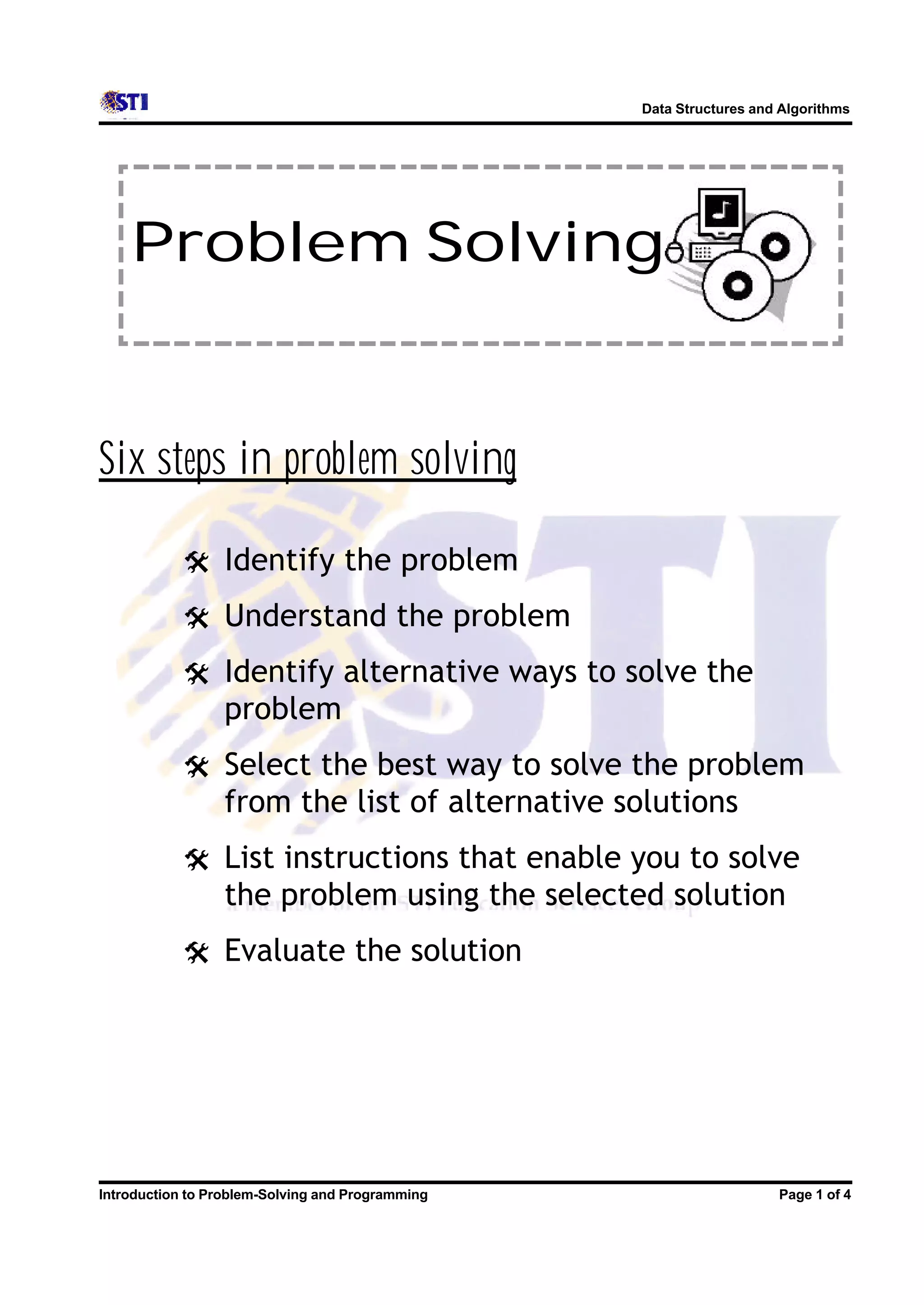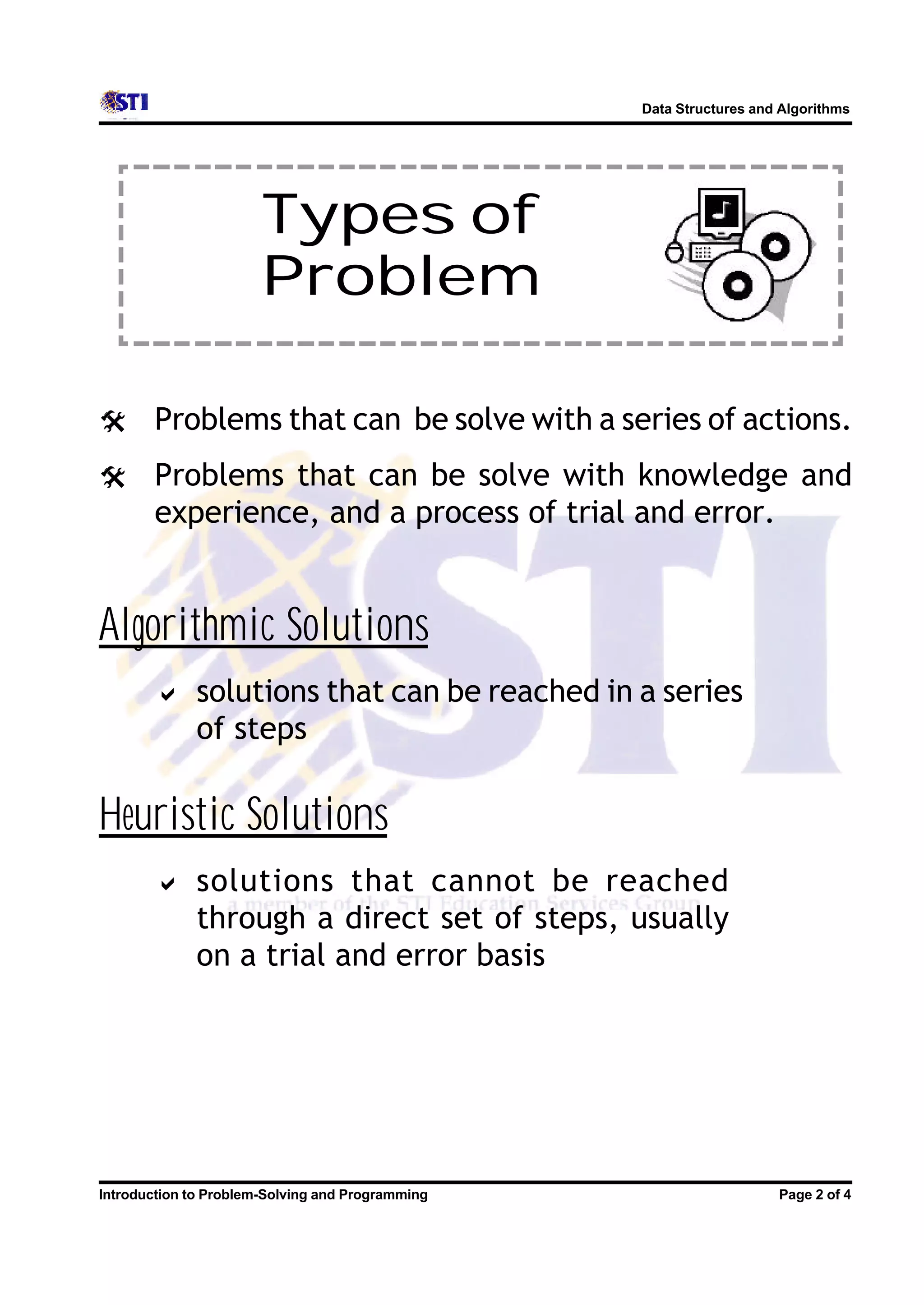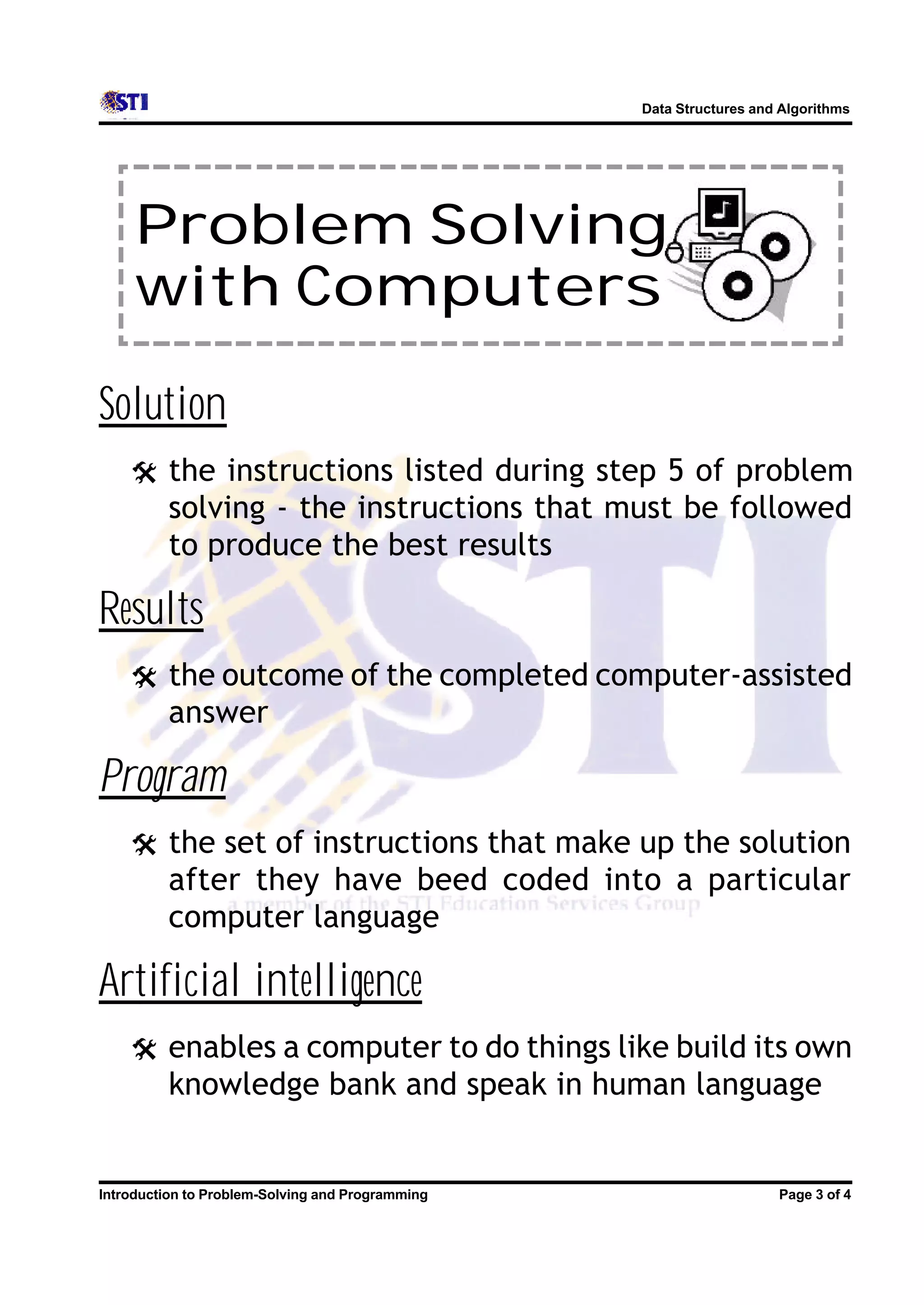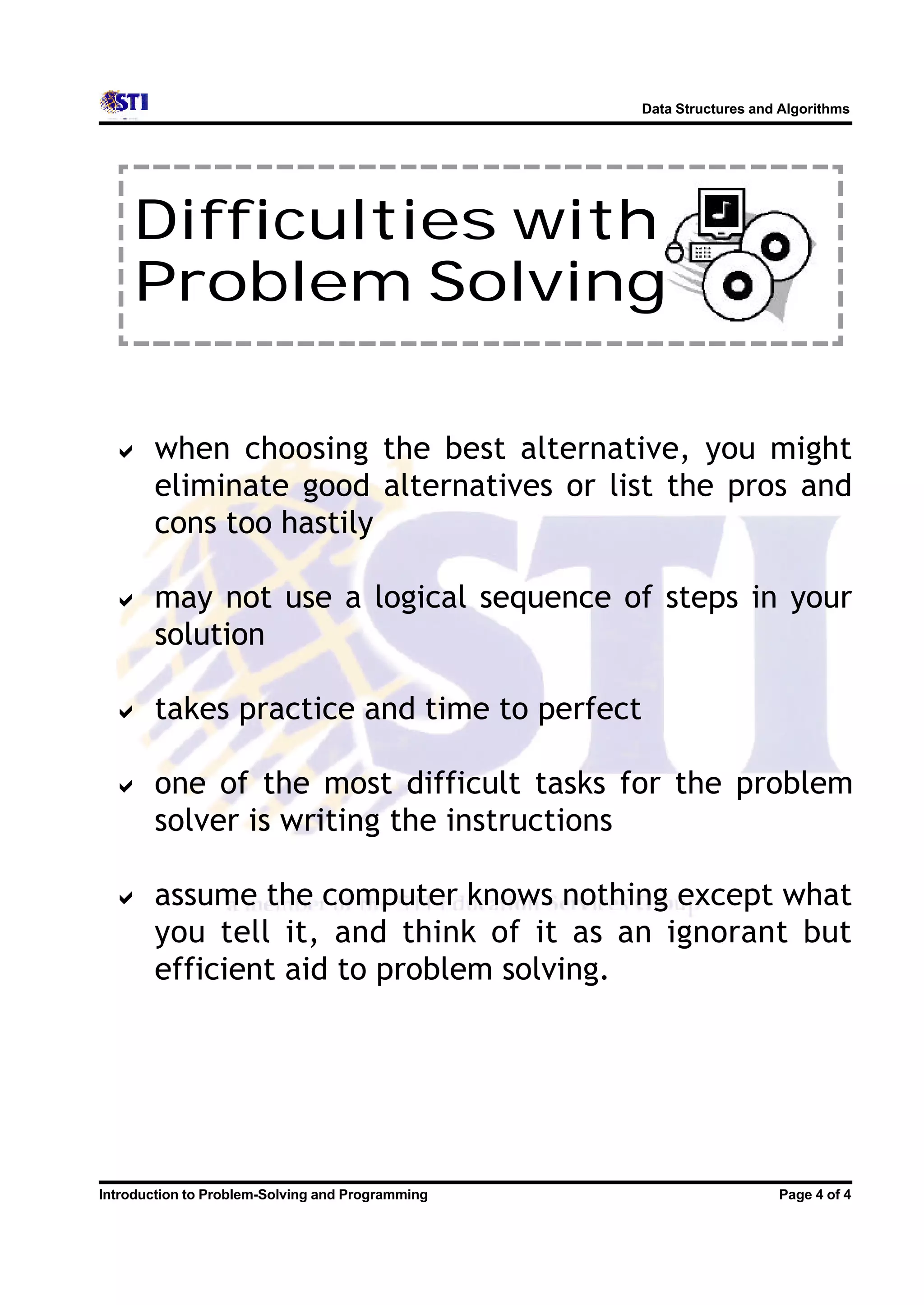Embed presentation
Downloaded 371 times




The document discusses the steps of problem solving which include identifying the problem, understanding it, identifying alternative solutions, selecting the best solution, listing instructions to implement it, and evaluating the solution. It also describes types of problems that can be solved algorithmically or heuristically and discusses problem solving with computers including defining solutions, results, programs, and artificial intelligence. Finally, it outlines some difficulties in problem solving like eliminating good alternatives or not following logical steps.




Introduces six problem-solving steps: Identify, Understand, Identify alternatives, Select the best, List instructions, Evaluate.
Describes two problem types: Algorithmic (step-based) and Heuristic (trial and error).
Discusses the role of computers in problem solving, including the development of programs and the concept of AI.
Highlights difficulties: Hasty decision making, non-logical sequences, the time required to improve, and the necessity of clarity in instructions.